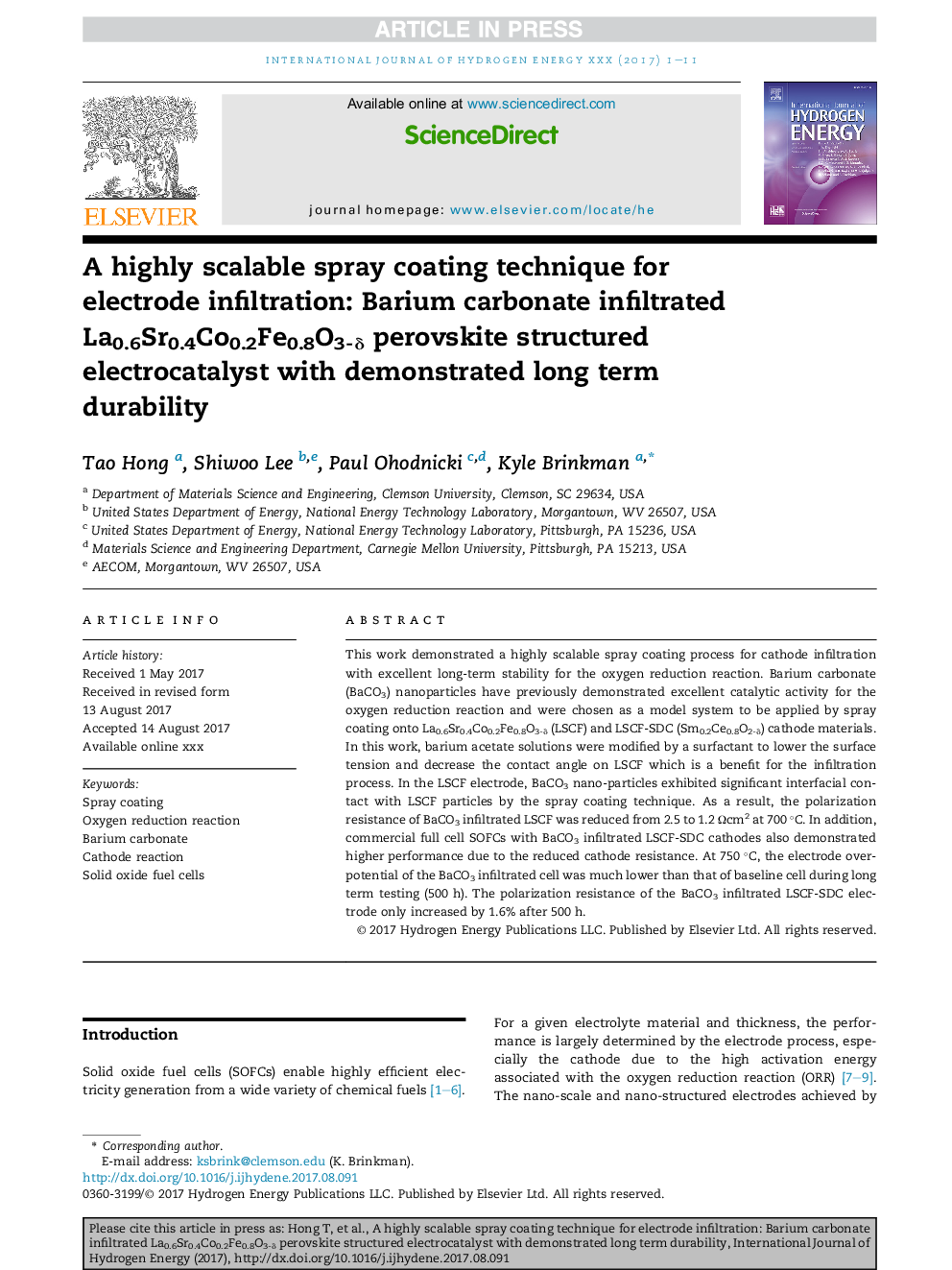| Article ID | Journal | Published Year | Pages | File Type |
|---|---|---|---|---|
| 5145128 | International Journal of Hydrogen Energy | 2017 | 11 Pages |
Abstract
This work demonstrated a highly scalable spray coating process for cathode infiltration with excellent long-term stability for the oxygen reduction reaction. Barium carbonate (BaCO3) nanoparticles have previously demonstrated excellent catalytic activity for the oxygen reduction reaction and were chosen as a model system to be applied by spray coating onto La0.6Sr0.4Co0.2Fe0.8O3-δ (LSCF) and LSCF-SDC (Sm0.2Ce0.8O2-δ) cathode materials. In this work, barium acetate solutions were modified by a surfactant to lower the surface tension and decrease the contact angle on LSCF which is a benefit for the infiltration process. In the LSCF electrode, BaCO3 nano-particles exhibited significant interfacial contact with LSCF particles by the spray coating technique. As a result, the polarization resistance of BaCO3 infiltrated LSCF was reduced from 2.5 to 1.2 Ωcm2 at 700 °C. In addition, commercial full cell SOFCs with BaCO3 infiltrated LSCF-SDC cathodes also demonstrated higher performance due to the reduced cathode resistance. At 750 °C, the electrode overpotential of the BaCO3 infiltrated cell was much lower than that of baseline cell during long term testing (500 h). The polarization resistance of the BaCO3 infiltrated LSCF-SDC electrode only increased by 1.6% after 500 h.
Keywords
Related Topics
Physical Sciences and Engineering
Chemistry
Electrochemistry
Authors
Tao Hong, Shiwoo Lee, Paul Ohodnicki, Kyle Brinkman,
